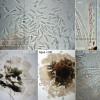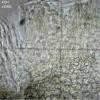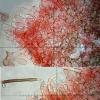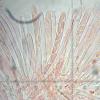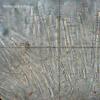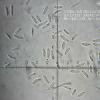
10-01-2026 01:18
 Danny Newman
Danny Newman
cf. Neovaginatispora fuckelii on indet. shrub Pre

07-01-2026 10:24
 Danny Newman
Danny Newman
Pezicula sp. on indet. hardwood Appalachian Highl

09-01-2026 17:41
Arnold BüschlenHallo, F. dilatata wird von vielen Bryoparasiten

09-01-2026 10:08
 Blasco Rafael
Blasco Rafael
Hola, en el mismo habitat que la anteriorRetamaDia

08-01-2026 21:22
 Blasco Rafael
Blasco Rafael
Hola, He recogido esta muestra de Orbilia sobre Re

07-01-2026 22:22
 Danny Newman
Danny Newman
Tatraea sp. on indet. hardwood The Swag, Great Sm

07-01-2026 17:29
 Marc Detollenaere
Marc Detollenaere
Dear Forum,On a barkless Populus I found some smal

10-11-2021 17:33
 Riet van Oosten
Riet van Oosten
Add-on topic http://www.ascofrance.com/forum/7059

07-01-2026 10:05
 Danny Newman
Danny Newman
cf. Chaetospermum on XylariaCosby Campground, Grea
Hello, this is the first time I participate in the forum but I am a follower.
My name is Carmen Echávarri, from Navarra (Spain).
I have a Mollisia to which I would like to give a name.
The key of A. Gminder takes me to M. benesuada and looking H. O. Baral's disc tabs looks like it could fit.
Could it be M. benesuada?
There is some info in the photos, but if more information is needed, please ask for it.
Best regards
Carmen
I'm currently finishing up a PhD involving some taxa in Mollisia and related genera, and since Zotto Baral or Andreas Gminder haven't jumped in, I thought I would give you my opinion.
Mollisia benesuada is not a bad working name. It is certainly possible, and your photomicrographs do correspond with the descriptions given by Phillips (1887) and Le Gal & Mangenot (1958). Here's a link to Phillip's description: http://www.librifungorum.org/Image.asp?ItemID=261&ImageFileName=0174b.jpg
Were your ascospores from fresh apothecia, and are you sure they are not slightly degraded and shrunken? If they are degraded, are the ascospores less pointed and slightly wider when fresh? The apothecia in your photomicrographs look very fresh and young, but the refractive bodies in the paraphyses are very broken up - are the spores and paraphyses from the same apothecia? Also, have you got images of the marginal cells of the apothecia from a cross-section?
I'm familiar with two common species on fallen branches in Wales (UK) which I think correspond to what many people have called Mollisia cinerea or Mollisia benesuada. If your ascospores were slightly wider and less pointed your collection would resemble the longer spored species. There's genetic evidence for at least six closely related but distinct species in this clade and based on the other features (ascospore oil droplets, ascus length, lack of other characters) I would tentatively expect it to belong to this group.
However, I doubt anyone can say for certain if this really is M. benesuada unless your specimen AND the original type specimen were DNA barcoded. There are a large number of lignicolous Mollisia spp.; the original descriptions are not very good and based on dried specimens; there are few differentiating features between many species; and there is high variability in ascospore size and shape between closely related species.
To add to the confusion, the correct nomenclatural name for Mollisia benesuada is Pyrenopeziza benesuada, as Gremmen combined a number of Mollisia spp. into Pyrenopeziza back in 1958 because he could not differentiate the genera when working with dried specimens. Mollisia is a very tricky genus...
I would probably class this species as Mollisia cf. benesuada/cinerea, which would give an idea of the morphology but also the uncertainty regarding identity.?
I hope that helps.
Cheers,
Brian Douglas
Regarding your questions, I can tell you all my photomicrographs are of fresh material, from the same collection but not the same apothecium.
No ascospores found outside the asci in the first apothecium, only within the asci and with congo red, what wont be of much help I'm afraid.
I'm sending more pictures, in case they help.
Regards
Carmen
Yes, those ascospores look less pointed and fit within my concept of this group. For the moment I would stick with the Mollisia cf. benesuada/cinerea or Mollisia cf. cinerea/benesuada diagnosis.
I think the ascospore shape and size variation is too high to reliably differentiate members of this group, and I'm not aware of any other reliable differentiating characters, even in culture. I've found one strain growing under and bursting out of bark (the "erumpant" character of Mollisia benesuada described on Alnus), but this collection was not morphologically or genetically different to others on bare wood, and the species is not specific to Alnus.
There may be subtle differences in substrate preference, host preference or anamorphs by which such species can be separated, but that would require a specific separate study. DNA sequencing could pin down the precise clade or phylotype of your collection but wouldn't provide a nomenclaturally accurate teleomorph name. Well characterised DNA barcoded (and preferably cultured) epitypes are needed for all of these species, but which species is which?
I can't upload my data until after I organise it, publish and submit my PhD, but you can compare with these excellently illustrated or photomicrographed collections, which look like they represent the same morphological species concept (Mollisia cinerea in the first paper).
http://www.ascomycete.org/portals/0/volumes/AscomyceteOrg%2002-02%2021-24.pdf
http://asco-sonneberg.de/pages/gallery/mollisia-benesuada-pyrus-130113-jam-01xs-coljj34081.php
http://asco-sonneberg.de/pages/gallery/mollisia-benesuada-cf-rhamnus-130118-01xsjj32601.php
Cheers,
Brian
Thanks again for your answer.
I hope that, when you can, you will share with us the results of your PhD.
I leave my specimen as Mollisia cf. benesuada / cinerea.
Thank you very much for everything.
Cheers
Carmen



